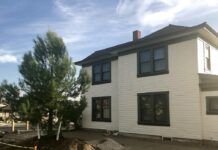The county of San Diego hosted five virtual workshops this week to gather input from residents on how to distribute the estimated funding it will receive from the American Rescue Plan Act of 2021.
The District 2 workshop was attended by corresponding Supervisor Joel Anderson and facilitated by San Diego County Assistant Chief Executive Officer Michael Vu, who said participation was important as the sum of money coming into the region to offset effects of the COVID-19 pandemic is quite large.
Out of the $130.2 billion approved by the Federal government under that plan, the San Diego County region is slated for $1.26 billion with $611.6 million going to all the cities in the region and $647.5 million going to the county.
That federal funding will be distributed in two installments: $323.75 million in the next two months and $323.75 in 2022.
By design, those funds must be spent on the COVID-19 public health response, economic impacts, reduction in revenue, investment in infrastructure such as water and broadband internet service, and premium pay for essential workers.
“Tonight is about your thoughts on how to allocate funding,” Vu said, before explaining that allocation would be modeled in part on how past dollars were spent.
Previous funding, he said, was primarily spent on testing, treating and vaccinations; economic impact funding; and food delivery services through a contract with Great Plates.
Monday’s workshop was structured so participants could rank potentially funded items higher or lower through a poll format, providing quantitative data on prioritizing budget items.
Ten polls were issued to participants to rank their priorities within categories that encompassed general funding, food and nutrition programs, mental health funding, senior and youth services, rental assistance, homeless outreach and shelters, family subsidies, infrastructure improvements, direct stimuli for families, and possible extra pay for essential government employees.
Visible poll results showed some of the top items chosen were mental health, food assistance, suicide prevention, relief for caregivers, rental assistance and childcare subsidies.
Each poll included an option for participants to supply suggestions or feedback.
Participants were asked to supply that information in the Chat feature of the Zoom meeting where it was only visible to host panelists, who shared some of the ideas throughout the evening.
A few participants suggested including grandparents in childcare subsidies.
San Diego County Director of Equity and Racial Justice Andrew Strong, who helped facilitate several of the polls said “it’s critical that funding is distributed in a way that reflects all our communities needs,” and agreed that grandparents have taken on additional caregiver duties so parents can work while schools participate in distance learning.
Other notable suggestions included supplying economic help to small businesses that agree to hire high school students who are entering the job market and several mentions of using funds to help disabled residents.
“I love the idea of funding businesses that agree to hire high
schoolers, we have to do more of that,” Strong said.
Although it appeared from data that fewer than ten participants offered feedback and those were primarily from Ramona, Campo, La Mesa and Lakeside, Vu said the county “will be compiling all this information and framing out how to use these respective funds for future consideration” in combination with feedback from other districts.
San Diego County’s COVID-19 subcommittee chair Nathan Fletcher said they are going to put as much of the money as possible into helping working families and small businesses recover.
“The County is on solid fiscal footing in spite of this pandemic andthere are no major deficits to backfill other than our daily expenses for the response; we are in a good position,” Fletcher said.
The workshop was available in translation for five languages but statistics showed only English-speakers participated.














